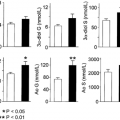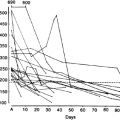PATHOGENESIS
Part of “CHAPTER 126 – OBESITY“
THERMODYNAMIC CONSIDERATIONS
It has become customary to remind all who deal with obesity that it is a disease of energy storage and as such must obey the laws of thermodynamics. The first law mandates that the amount of energy in any system cannot vary unless the inflow or egress of energy from the system becomes unequal. In mathematical terms, ΔE = Q – W. For our purposes this formula translates into the following: Any change in adipose tissue mass (E) cannot come about unless there is a change of Q (food intake) or W (caloric expenditure).
A brief perspective on the history of thermodynamics may be relevant.11 Engineers, mechanics, and scientists before the nineteenth century earnestly labored to develop a perpetual motion machine. In fact, the history of science is strewn with the wrecks of plans and models for such machines. The second law of thermodynamics, enunciated in the nineteenth century, ordained that entropy rises with the operation of these machines, and, thus, the machines must stop unless more energy is supplied; however, this did not curtail efforts to create engines that might subdue entropy. The history of obesity research and the first law of thermodynamics are similar.12 At the end of the eighteenth century, Lavoisier had shown that respiration and oxidation are not different from combustion. There is no vital heat production in living organisms, different from the production of heat by the burning of fuels in ovens or bonfires. Nevertheless, the search for ways to extract more energy from ingested food or burn away more energy than can be explained by simple chemical considerations remains active. Periodically, new diets allege to “burn away fat” or to enable one to “eat all you want without weight gain.”
Consider for a moment the formula, ΔE = Q – W. It should be evident that, over long periods of time, ΔE = 0. This means that weight is generally stable whether one is obese or lean. With weight stability, however, passage of calories through the system is high; during an average lifetime one can expect that >50 million calories will come in as Q and disappear as W. Hence, very small alterations in the system can make for great obesity or remarkable leanness. The most interesting phenomenon from the standpoint of energy storage is the reason why Q and W are so often precisely equal. Most clinicians have chosen to focus on the possibility that some individuals eat a lot and remain thin whereas others eat very little yet become obese. These observations that appear to violate thermodynamic principles have carried the name endogenous obesity. Other observers have focused on the fact that obese individuals are driven by remarkable psychological or hedonic drives and supposedly do this in secret. This would be considered exogenous obesity.
Classic studies nearly 70 years ago demonstrated clearly that all individuals, obese or not, respond to diets in lawful ways.13 One might have hoped that bizarre notions about diets and obesity would have vanished. However, perusals of studies of nutrition and obesity done in recent years still level accusing fingers at either the sedentary nature of our lives or our propensity to overeat as though in some way these two behaviors can become completely disarticulated from each other. To be sure, the presence of obesity means that at some point ΔE rose above 0. It is not often realized, however, that such changes in ΔE must have been quite small since the acquisition of obesity is measured in months or, more frequently, many years. The extra bites of food eaten each day or the slight diminutions in physical activity that create obesity have been difficult to measure. When precise measures of total 24-hour energy expenditure were made in obese and nonobese individuals in a hospital setting, utilizing various techniques for measuring energy expenditure, it was found that differences between the obese and nonobese, when expressed per kilogram fat-free mass, were small.14 For example, the obese expended 51 ± 7 kcal/kg fat-free mass, as compared to 47 ± 7 kcal/kg fat-free mass in the nonobese. Since these studies were done in a circumstance in which weight was
kept stable by giving a sufficient amount of food intake to maintain stability, clearly Q = W; therefore, the food intake of the obese is only very slightly larger than that of the nonobese and is matched by the slight increase in energy expenditure. This increased caloric exchange of the obese may well be the necessary additional energy required for carrying a larger fat mass or the need for more cardiopulmonary activity than in the lean.
kept stable by giving a sufficient amount of food intake to maintain stability, clearly Q = W; therefore, the food intake of the obese is only very slightly larger than that of the nonobese and is matched by the slight increase in energy expenditure. This increased caloric exchange of the obese may well be the necessary additional energy required for carrying a larger fat mass or the need for more cardiopulmonary activity than in the lean.
The previous data do not speak to any deficiency of caloric expenditure in the obese. One theory, which has been prominent since early in this century, is that all individuals have “luxus konsumption,” which permits them to overeat and burn more calories in response to overeating, as a control against becoming obese. The fault of obesity was believed by some to be found in an inability to exercise this special control mechanism with precision. Extrapolating from brown adipose tissue, which in some animals and in the premature human infant create nonshivering thermogenesis by excess caloric burning, it has been thought that the obese experience a dysfunction of brown adipose tissue or a deficiency in amount. Yet, the data clearly show no deficiency in energy production in the obese, but rather a slight increase.
Stay updated, free articles. Join our Telegram channel

Full access? Get Clinical Tree





